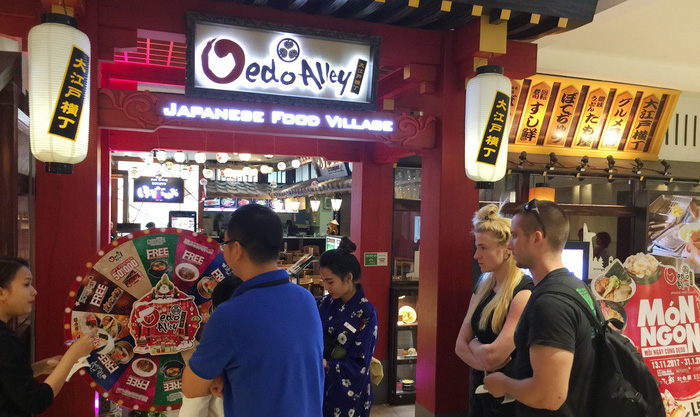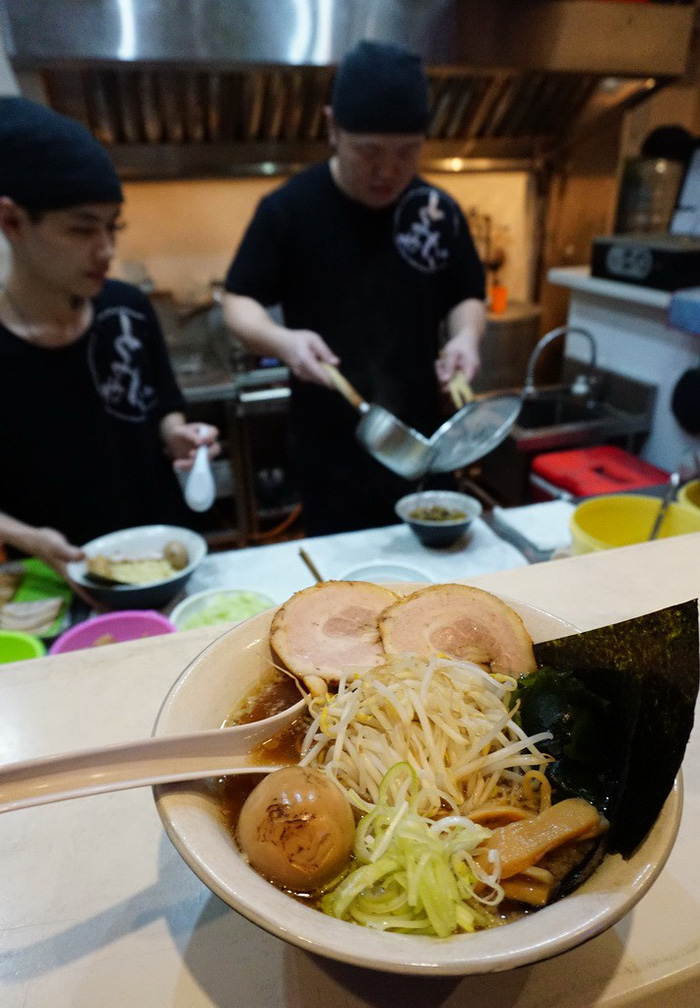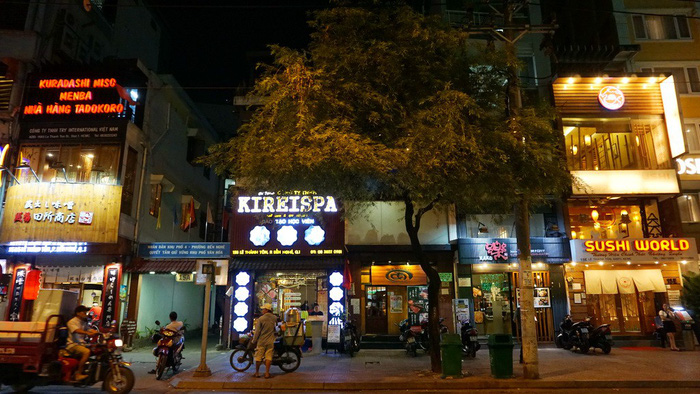The presence of Japanese culture is omnipresent in Ho Chi Minh City, but it is mostly concentrated in Residential Units 33, 34 and 36 of Ben Nghe Ward, District 1, near the corner of Thai Van Lung and Le Thanh Ton Streets.
This area has been given the title “Little Tokyo.”
It is not an overstatement to call “Little Tokyo” a Japanese wonderland.
Here, Japanese-owned pubs, barbecue restaurants, and massage services abound. Japanese signage overwhelms Vietnamese translations.
Japanese style is maintained throughout the neighborhood, including in each business’s interior design and customer service.
‘Are you a Japanese?’ asked a landlord
Little Tokyo is not only a hot spot for Japanese restaurants, but home to the densest population of Japanese nationals in the city, according a resident here.
Within Residential Unit 34 only, 68 out of 70 Vietnamese house owners rent accommodation to Japanese.
 |
| Japanese diners abound on Le Thanh Ton Street, part of ‘Little Tokyo,’ in District 1, Ho Chi Minh City. Photo: Tuoi Tre |
Some residents use the property for business, while others simply need long-term accommodation.
“In this area, most Vietnamese rent out their property and live in other neighborhoods, so there are few locals here. The residences are all rental properties, but only for Japanese!” a property manager explained.
Ph., the owner of Residential Unit 34, said that he offers three rooms for rent.
He used to accept tourists of different nationalities, but over the last two years he has adopted a Japanese-only policy.
His priority for Japanese tenants stems from his personal experiences during a trip to Japan he took to care for his pregnant daughter.
“While I was at the airport in Tokyo, I received enormous support from airport ground staff,” he elaborated.
While his daughter was going into labor, he witnessed the highest level of dedication and responsibility from medical staff, an experience which made him fond of Japanese culture.
Back home, he began to notice the sense of discipline, hygiene, tidiness, and work ethics prevalent in his five young Japanese tenants.
“The Japanese are the most easy-going of all the foreigners I’ve known. They are highly disciplined and persevering,” Ph. concluded.
A Japanese noodle restaurant
With a tiny sign written in only Japanese, the noodle shop 75TD of Tomidaya is easy to miss.
Most of the tiny 15m² restaurant is kitchen space. Diners sit at an L-shaped dining area with enough stools to host only eight people at a time.
On a recent evening, seven customers patiently waited outside the restaurant.
 |
| A bowl of noodles for sale in ‘Little Tokyo’ can be seen in this Tuoi Tre photo. |
After being seated, the friendly waiters showed a menu with only eight dishes, mainly ramen (rounded noodles served in soup) and tsukemen (rectangular noodles served on two plates).
The prices ranged from VND100,000 (US$4) to VND190,000 ($8) per bowl.
Diners at 75TD of Tomidaya are also treated to clear views of the chefs’ artistic cooking while eagerly awaiting their meals.
Tomidaya, the owner, has his own way of keeping customers focused solely on the food – he stares at anyone brave enough to talk over the meal until they shut up and finish their bowl.
Ho Hoang Anh, a chef who specializes in traditional Vietnamese royal foods, was one customer at the restaurant.
She praised the richness of the broth, the softness of the meat, the firmness of boiled bamboo shoots, and the scent of seasoned egg yolks.
“The chef placed all his heart into every single bowl of noodles. I was not only eating the noodles themselves, but I was inspired by the Japanese cooks,” she added.
“They truly value their food and consider each dish a work of cuisine art.”
This restaurant in particular does not offer takeaways despite occasional customer requests.
The reason, according to Duong Tieu Loc, a chef here, is the meticulousness of the owner.
“Tomidaya is highly cautious with his noodle dishes and would never allow them to be taken out of the place,” he explained.
“Everything about each noodle bowl has been perfectly calculated, including the amounts of ingredients and the time for consumption. Once a bowl is taken home, it will lose its quality, which is the last thing Tomiyada would like to see.”
Like us on Facebook or follow us on Twitter to get the latest news about Vietnam!



















































